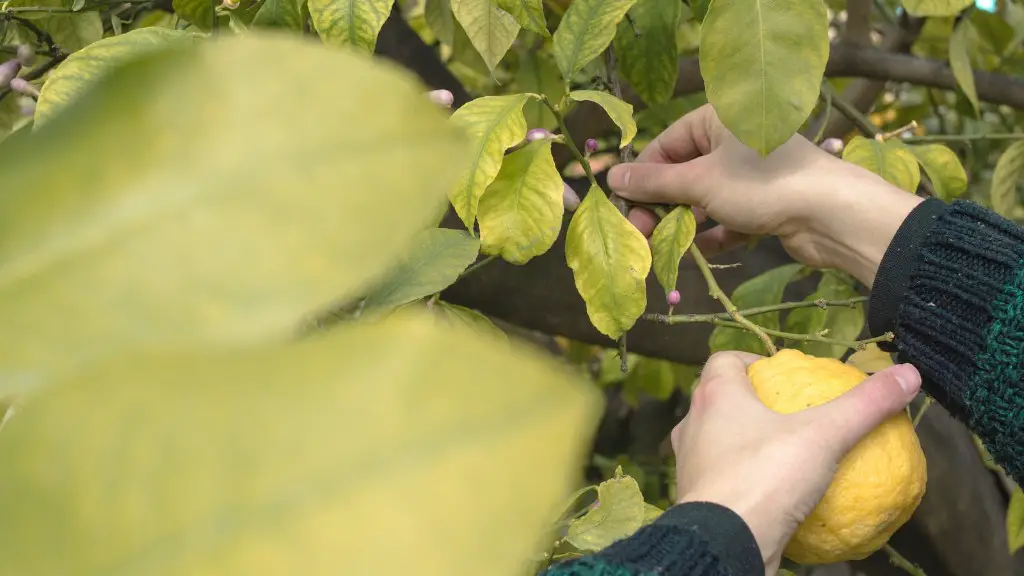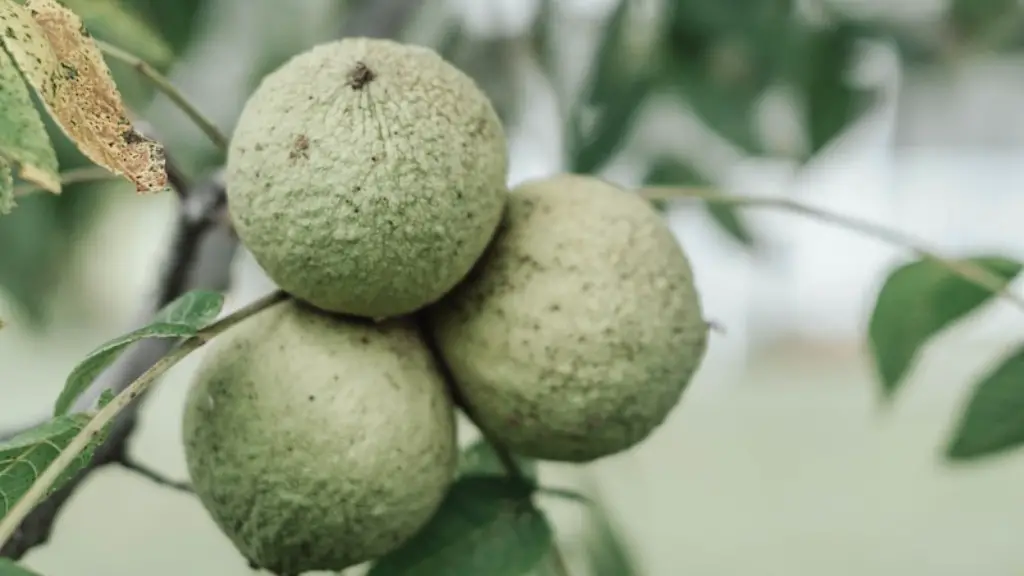Growing lemon trees in a home garden is quite possible. With the right habits and conditions, anyone can successfully cultivate these juicy citrus fruits right in their backyard. This article explores the steps to take in order to plant a lemon tree and tend it to fruition.
Firstly, it’s important to select a lemon tree that will live in the space. Some popular lemon trees to grow in a home include Meyer lemons, Eureka lemons, and Lisbon lemons. Select a tree with a mild climate, according to the variety chosen, and use a large container for the tree’s roots to allow for its expansion.
Second, prepare the soil for planting. Use well-draining soil such as cacti and succulent soil, adding perlite and peat moss for extra drainage. The soil should be enriched with organic material such as compost, manure, and topsoil.
Third, offer the tree some sun and make sure it gets enough irrigation. Place the tree carefully in the pot, pressing dirt down firmly. Lemon trees are best grown in full sun, so make sure the location where you place the tree receives at least six to eight hours of direct sunshine each day.
Fourth, water the soil regularly, but do not oversaturate it. Citrus likes consistent moisture, so make sure to water the soil when it begins to feel dry to the touch.
Fifth, fertilize the tree every three weeks with a food grade citrus fertilizer. This will provide the tree with the essential nutrients it needs to grow.
Finally, it’s important to prune the tree regularly to help shape it, promote healthy growth and fruiting, and keep the canopy open. Be sure to prune away weak branches, dead or diseased limbs, and open up the canopy so the tree may receive plenty of sunshine.
Taking Care Of The Lemon Trees
Taking good care of the lemon trees is an essential part of ensuring they remain healthy and are able to produce large amounts of fruit. Fertilizing and watering the tree regularly will help to provide the nutrients it needs and keep it hydrated during the warm seasons. Pruning the tree regularly can also help to shape it and maintain an open canopy so it receives the necessary sunshine.
If pests or diseases arise then it’s important to treat them quickly using organic, natural methods, such as neem oil and other insecticides, or fungicides to prevent the spread. Finally, removing dead or diseased branches or limbs is important to maintain a healthy and vibrant looking tree.
Harvesting The Lemons From The Trees
When the lemons have fully ripened and turned yellow, carefully pluck them from the branches for harvesting. Lemons should be allowed to ripen for several weeks before being harvested, to ensure they are as sweet and juicy as possible. When harvesting the lemons it’s important not to damage the branches or leaves of the tree, as this can affect its growth and ability to produce fruit.
When harvesting, lemons should be cut off the tree, rather than pulled, as this causes less stress to the tree’s branches and leaves. Always wear gloves when harvesting lemons from the tree, and make sure to wash your hands afterwards to prevent any contact with the lemon’s juices.
Pest Control
Pest infestations can cause serious damage to lemon trees and can be difficult to get rid of. To prevent pests from establishing in the first place it’s important to keep the tree healthy by fertilizing and watering it regularly and pruning it as needed. In addition, it’s important to inspect the tree regularly for signs of pests such as aphids, whiteflies, and mealy bugs.
Organic or natural pest control methods such as neem oil and bacillus thuringiensis can be used to treat the tree if pests do occur. It’s also important to keep the area around the tree clear of debris and organic matter to reduce hiding places for pests.
Fungal Infections
Fungal infections, such as scab, can affect the leaves and branches of lemon trees, leading to deformities and reducing fruit yield. It’s important to inspect the tree regularly for signs of these infections and treat them with chemical or organic fungicides if necessary. As prevention, it’s important to keep the tree healthy by providing it with enough sunlight, water, and fertilizer.
In addition, it’s important to keep the area around the tree free of debris and organic matter to reduce the chances of fungal infections from forming. Sanitation also plays an important role in preventing fungal infections, and it’s essential to clean and disinfect any tools or supplies used for caring for the tree.
Protecting Lemon Trees From Cold Temperatures
While lemon trees are very hardy and can handle moderate cold temperatures, they cannot tolerate extreme cold. In locations that experience freezing temperatures, lemon trees must be covered or brought indoors at night to prevent damage or death of the tree. It’s also important to choose a variety of lemon tree that can withstand the climate of the location.
Mulching the trees with materials such as dry leaves or straw can also help insulate the roots of the tree during cold temperatures. Finally, it’s important to inspect the tree regularly for signs of frost damage and treat it accordingly.


